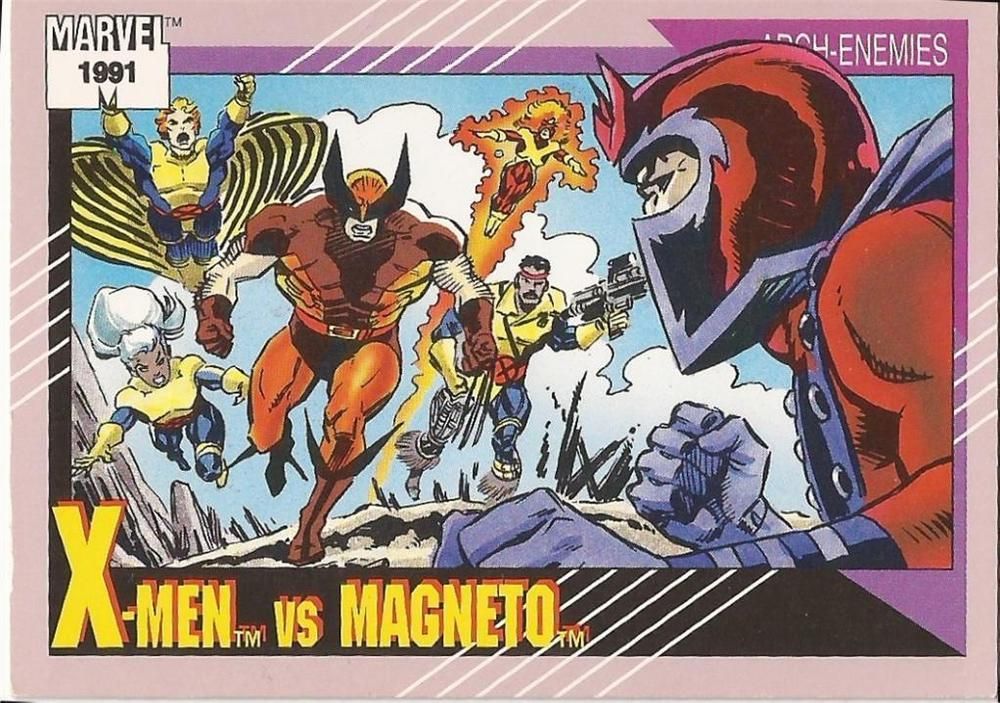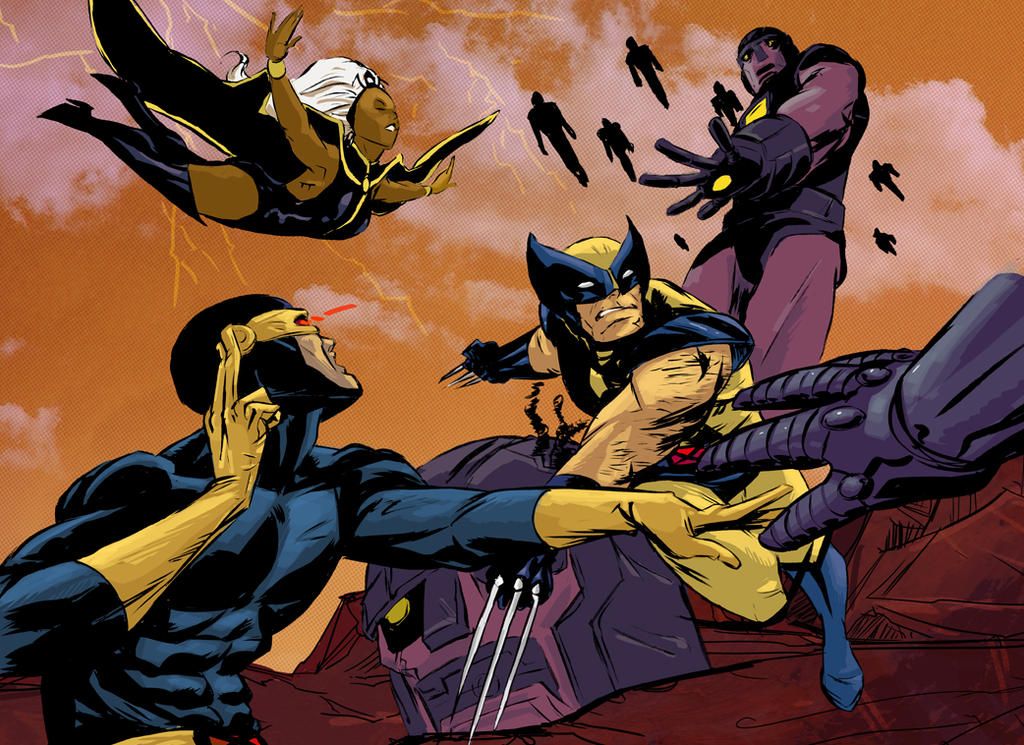More thoughts about the FKR X-Men game
I haven’t stopped thinking about his game (I even watched The Gifted) and there are a few questions that need answering. Mostly, how would I run combat and other action scenes? We obviously want these to be fast-paced and dynamic. My solutions are simple:
1. No referee rolls. Only the players roll for actions. If there really is a situation that’s NPCs only and where chance is involved, I’d just ask a question in an oracle sort of way and roll a d4:
Is Pr. Xavier able to locate Emma Frost with Cerebro when she doesn’t want to be found?
- No, and… it hurts his big brain and he’ll have to recover from the backlash
- No, but… he finds another mutant who she mind controlled recently
- Yes, but… she’s aware he found her, and very pissed off about it
- Yes, and… he has a good idea of what she’s been doing
2. Lots of lists. Lists of adversary traits (with some inspiration from Dungeon World’s monster moves); and lists of scenes or locations features (the way I used to prep for Feng Shui back in the day) so I am fictionally prepared for action.
 from 1991 Marvel Universe Series 2
from 1991 Marvel Universe Series 2
Non-Player Characters
Statting up NPCs without using numbers (one of my hard rules for FKR design) can easily be done like in OZR: when damaged, the enemy loses a trait (or move, or piece of equipment), which they can’t use for the rest of the scene.
The more important or powerful the character, the more traits they have. A successful attack removes the most plausible trait. Encouraging players to target their attacks or change their tactics to neutralise certain powers would be easy and very much in genre - and that’s certainly how I would play my bad guys (“How do you shoot that optic blast now that Magneto has wrapped your head in a car door, Cyclops?”)
An opponent running out or traits is defeated - their actual health status at this stage depends on what happened in the fight; they might just surrender or run away.
Enemy traits also help establish the parameters of a roll: what happens on a failure, success, or overkill. (In the previous post, I forgot to make it plain that the game doesn’t offer a difficulty scale - I’ll post some clarifications next time.)
Some NPCs of various danger levels:
- Human Rights rioter. Thick racist skull.
- Weapon X base guard. Vigilant. Assault rifle. Uses squad-based tactics to surround, flank, incapacitate.
- Toad. Superhumanly agile. Sneaks into pretty much anywhere. Spits sticky stuff. Catches something with his tongue. Gets rescued by Brotherhood members.
- Magneto. Master of Magnetism. Iron will. Telepathy-blocking helmet. Flies using Earth’s magnetic field. Deadly or incapacitating metal attacks. Blocks any attack. Mold smetal into any shape. Levitates whole buildings to make a statement. World leader (Genosha). Makes grandiloquent, inspiring speeches.
Two notes about this:
- Powerful baddies would get traits that kind of overlap, and some that don’t do much (such as Magneto’s Iron will). They’re there to soak up more punishment.
- Weaknesses should be included in NPC writeups (and influence the results and conditions of a roll), but I don’t know if they should be traits - maybe the weakness is the last trait to go?
 Art by Greenestreet on Deviantart
Art by Greenestreet on Deviantart
Location Stunt Lists
This simply answers the question: What cool things could happen? For fight locations, it’s a list of features to be used for PC stunts. For example, the vehicles garage on a military base would have:
- Catwalks and stairs to sneak, run and teleport on
- Garage doors that can only be open from a bullet-proof guard station overhead
- CCTV feeds; visible by garage guards; can be accessed by central command post if alarm is raised
- Lots of tools to telekinetically hurl at enemies
- A couple of humvees, a few motorbikes, and a helicopter to hijack or blow up
- Barrels of petrol and piles of tires to set on fire
- Grease pits with elevated vehicles and engine blocks swinging on chains
If I had a clear idea of what is happening in a location (a fight for example), I would also have a list of events as described below.
Action Scenes Lists
Whether a scene happens in a preordained location or not, having a handful of events, twists, and other ways to raise or change the stakes is always good. Continuing on the example above, if the plan was to have the X-Men escape from the base, I’d go with something along the lines of:
- Shift change: 4 guards show up and cross the garage. 2 relieve the ones at the entrance, and 2 climb the stairs to the guard station.
- Routine security call: guards test infrared cameras and goggles, motion detectors, etc.
- Two off-duty soldiers are having sex or doing drugs in the back of a humvee.
- If the alarm is sounded, groups of soldiers show up every few minutes. First regular guards, then heavily armoured, anti-mutant troops.
- If the X-Men don’t escape swiftly or discreetly, they can expect the turrets outside pointing at the garage doors when they go through them.
Another Stolen Idea: Sub-Locations
Over a decade ago, French publisher John Doe released Les Mille Marches a pulp adventure game by Grümph that made an impression on me. I’ll dig it out of my shelves and read those rules again, but the idea I want to borrow is simple: you don’t need a battlemap to use the environment in a fight scene. Just draw large squares in your notes, and write down some environmental conditions for each one, with advantages and . You don’t need to do this for every potential fight location, but it’ll add some flavour and tactical options to your set piece.
Characters can go from a sub-location to another willingly or not. Which sub-loc is contiguous to which depends on the fiction and/or of a map. Picture Wolverine tackling Sabretooth through a window, moving their clawo-a-clawo duel to a side alley where one or the other could take advantage of the conditions there.
Our military garage from above could have:
- Catwalks: dark and sneak friendly, easy to fall down, easy to break to make opponent fall down
- Security office: brightly lit, close quarters, people with guns
- Grease pit: slippery, danger of being crushed, power tools
- Through the garage door: not much cover, potential fire range, automated turrets